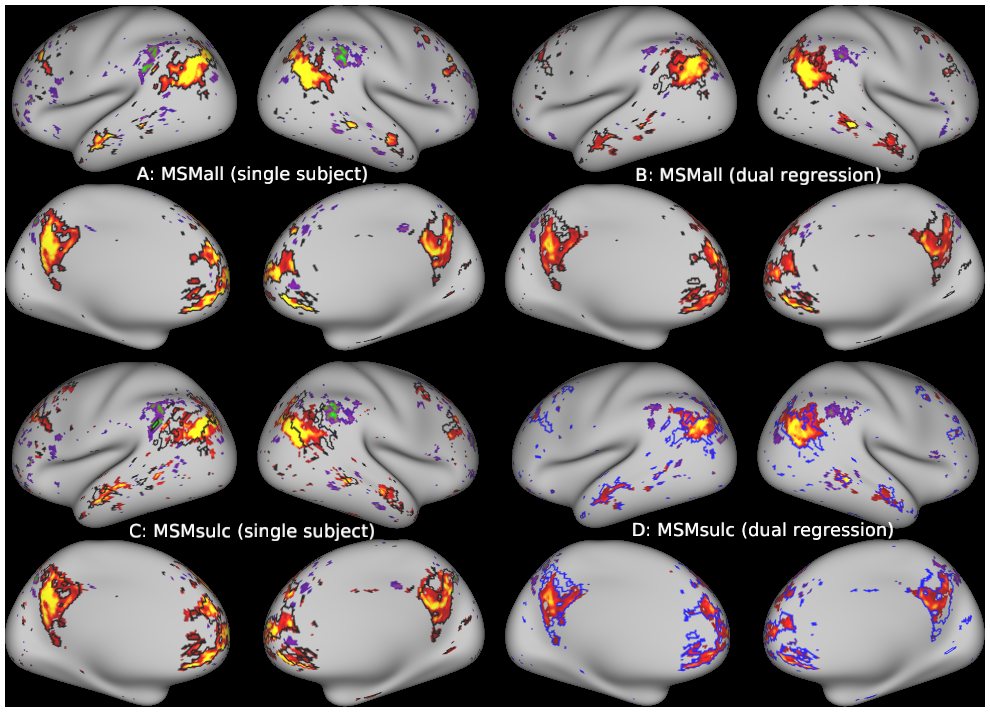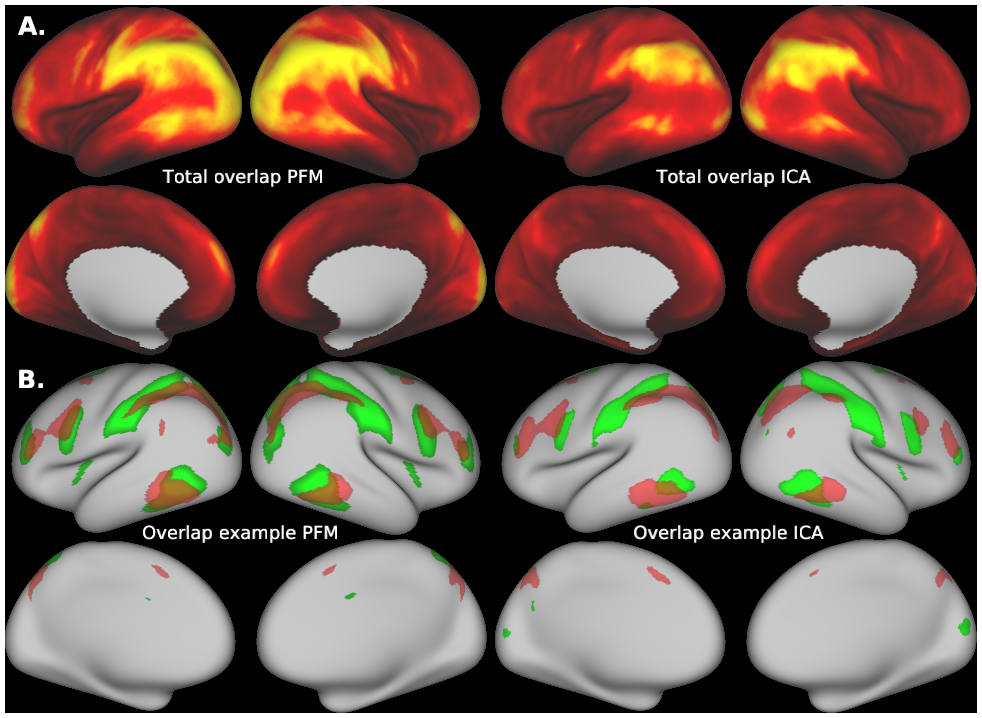FULL TITLE:
The relationship between spatial configuration and functional connectivity of brain regions revisited
SPECIES:
Human
DESCRIPTION:
The estimation of functional connectivity network matrices from resting state fMRI is driven by a combination of spatial and temporal factors in the presence of spatially overlapping network structure.
ABSTRACT:
In our previous paper (Bijsterbosch et al., 2018), we showed that network-based modelling of brain connectivity interacts strongly with the shape and exact location of brain regions, such that cross-subject variations in the spatial configuration of functional brain regions are being interpreted as changes in functional connectivity. Here we show that these spatial effects on connectivity estimates actually occur as a result of spatial overlap between brain networks. This is shown to systematically bias connectivity estimates obtained from group spatial ICA followed by dual regression. We introduce an extended method that addresses the bias and achieves more accurate connectivity estimates.
PUBLICATION:
eLife
- DOI:
10.7554/eLife.44890
- PMID:
31066676
- Janine Diane Bijsterbosch
- Christian F Beckmann
- Mark W Woolrich
- Stephen M Smith
- Samuel J Harrison





